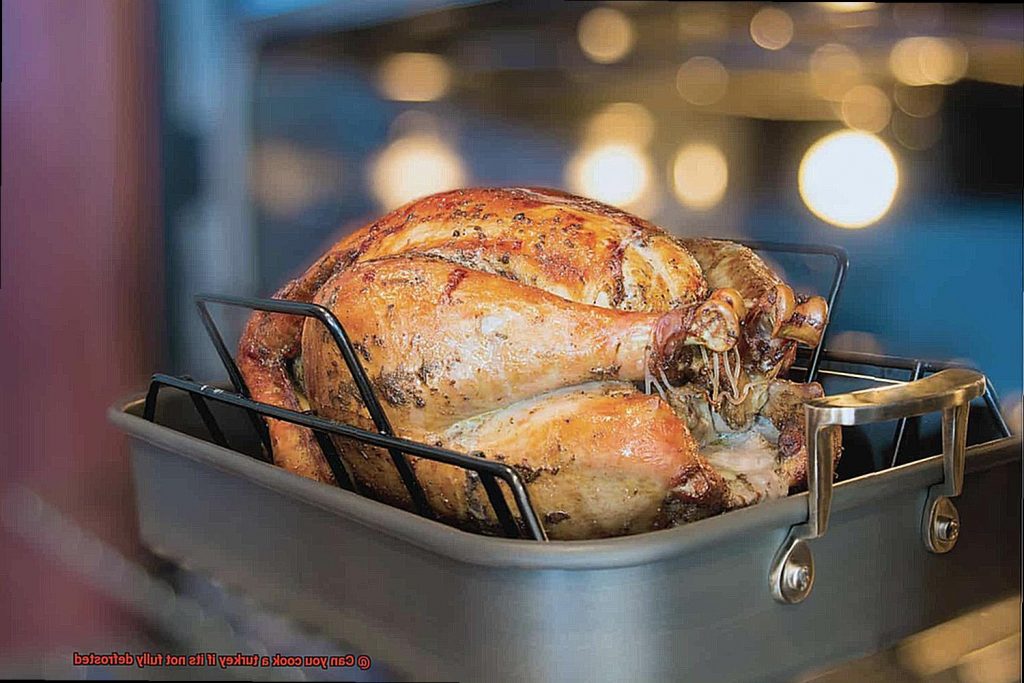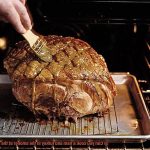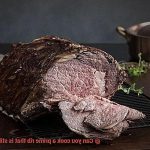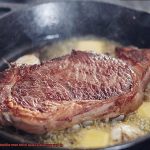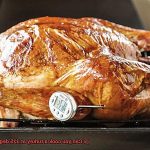Thanksgiving is just around the corner, and you’re probably already planning your menu and getting your kitchen ready for the big day. But what if you wake up on Thanksgiving morning to find that your turkey is still partially frozen? Don’t panic. While cooking a turkey that’s not fully defrosted can be risky, there are safe ways to do it without putting your guests’ health at risk.
First things first: why is it dangerous to cook a partially frozen turkey? According to the Centers for Disease Control and Prevention (CDC), cooking a turkey that’s not fully thawed can lead to uneven cooking, which creates hot spots where bacteria can thrive. This can cause food poisoning, which is definitely not something you want to deal with on Thanksgiving Day.
But fear not – there are ways to safely cook a partially frozen turkey. In this blog post, we’ll explore the risks associated with cooking a partially frozen bird and share some tips for doing it safely. We’ll also talk about the importance of properly defrosting your turkey in advance to avoid any last-minute disasters.
By the time you finish reading this post, you’ll have all the information you need to confidently tackle that partially frozen bird and serve up a delicious Thanksgiving feast that’s both safe and satisfying. So let’s get started – we’ve got some turkeys to cook.
Contents
What is the Risk of Cooking a Partially Frozen Turkey?
With Thanksgiving fast approaching, preparing a succulent turkey feast is on everyone’s mind. However, it is important to note that cooking a partially frozen turkey can be hazardous and risky.
The primary risk of cooking a partially frozen turkey is uneven cooking. The outside may get overcooked while the inside remains undercooked or raw, leading to harmful bacteria such as salmonella and campylobacter lurking within the undercooked meat. These bacteria can cause foodborne illnesses, which can be extremely dangerous, especially for children, the elderly, and those with weakened immune systems.
In addition to uneven cooking, a partially frozen turkey may take longer to cook than a fully defrosted one. This can cause the bird to dry out and become tough if left in the oven for too long.
Another risk associated with cooking a partially frozen turkey is the potential fire hazard. As ice melts within the turkey, hot oil or grease may splatter or boil over, creating a dangerous fire hazard. To avoid this risk, ensure that your turkey is entirely defrosted before cooking.
To ensure safe and delicious results, it is essential to fully defrost your turkey before cooking. If you are short on time, there are ways to safely cook a partially frozen turkey by rinsing it thoroughly with cold water and using a meat thermometer to ensure that it reaches an internal temperature of 165°F (74°C) in the thickest part of the meat.
How to Prepare a Partially Frozen Turkey for Cooking
Preparing a partially frozen turkey for cooking can be a bit tricky, but it’s not impossible. Here are five sub-sections that will guide you through the process and ensure a delicious and safe Thanksgiving meal.
Removing Packaging and Giblets
Before cooking your turkey, remove any packaging, wrapping, or netting from the bird. Make sure to also take out any giblets or neck that may be inside. Be careful when removing these as there may still be ice crystals present inside the turkey which can be sharp.
Thawing the Turkey in Cold Water
The safest way to thaw a partially frozen turkey is to soak it in cold water. Place the turkey in a sink or large bowl filled with cold water. Change the water every 30 minutes to keep it cold and prevent bacterial growth. It is important to note that this method will take longer than fully thawing the turkey in the refrigerator, so plan accordingly.
If there are any ice crystals on the bird, you can leave them in place since they will melt during cooking. However, if there are any large ice chunks, you’ll want to remove them as they can cause uneven cooking.
Seasoning and Stuffing
Once the visible ice has been removed, it’s time to season the turkey. Use your favorite herbs and spices or follow a recipe for a specific flavor profile. Be sure to season both the inside and outside of the bird.
If you plan on stuffing the turkey, make sure it’s at room temperature before placing it inside. This will help prevent the turkey from cooking unevenly.
Adjusting Cooking Time and Checking Internal Temperature
Cooking a partially frozen turkey will require more time than a fully thawed one. Plan on adding 50% more cooking time than what you would use for a fully thawed turkey. Preheat your oven to the desired temperature and place the bird in a roasting pan. Cover the turkey with foil and place it in the oven.
It’s important to keep an eye on the internal temperature of the turkey using a meat thermometer. A partially frozen turkey will take longer to cook than a fully thawed one, so plan accordingly. Once the internal temperature reaches 165°F (74°C), remove the foil from the turkey and continue cooking until the skin is golden brown and crispy.
Carving and Serving
After your turkey is done cooking, let it rest for 20-30 minutes before carving. This will give the juices time to redistribute throughout the meat, making it more flavorful and juicy. Use a sharp knife to carve the turkey and arrange it on a platter for serving.
How Long Does it Take to Cook a Partially Frozen Turkey?
Cooking a partially frozen turkey can be a daunting task, but with the right approach, you can impress your guests with a delicious and perfectly cooked bird. One of the most important factors to consider is the cooking time. It’s crucial to ensure that the turkey is cooked thoroughly and reaches the right internal temperature to avoid any potential health risks.
The cooking time for a partially frozen turkey can vary depending on multiple factors, such as the size of the bird and the cooking method used. Generally, it can take up to 50% longer to cook a partially frozen turkey compared to a fully thawed one. For example, if you were planning to roast a fully thawed 12-pound turkey at 350°F, it would take around 2.5 to 3 hours to cook. However, if your turkey is partially frozen, you may need to cook it for an additional 1 to 1.5 hours, bringing the total cooking time up to 3.5 to 4.5 hours.
It’s important to note that using a meat thermometer is crucial when cooking a partially frozen turkey. Checking the internal temperature of the thickest part of the bird, such as the breast or thigh, will ensure that it has reached an internal temperature of at least 165°F. This is essential to avoid any foodborne illnesses that can occur from undercooked poultry.
Moreover, you may need to adjust your cooking time based on your specific cooking method. For instance, if you’re using a grill or smoker, you may need to add extra time and make sure that the internal temperature of the turkey reaches 165°F before serving.
In summary, cooking a partially frozen turkey requires patience and careful attention to detail. Here are some additional tips:
- Remove any giblets or neck inside the bird before cooking.
- Let the turkey rest for at least 15 minutes before carving.
- Baste the turkey every 30 minutes to ensure it stays moist.
- Cover the turkey with aluminum foil if it starts to brown too quickly.
What Temperature Should I Cook My Turkey To?
Knowing the correct temperature to cook your bird is crucial for both taste and safety. As an expert in this field, let me guide you through the process of cooking a juicy, succulent turkey that will leave your guests asking for seconds.
First and foremost, temperature control is key. The USDA recommends a minimum internal temperature of 165°F (73.9°C) for cooked turkey. To ensure that your bird reaches this temperature, use a meat thermometer to check the thickest part of the breast, the innermost part of the wing, and the innermost part of the thigh. Don’t rely on visual cues such as color, as they can be deceiving.
If you are cooking a partially frozen turkey, it’s important to adjust your cooking time accordingly. Plan for an additional 50% cooking time if your turkey is not fully defrosted. For example, if you would normally cook a fully thawed turkey for four hours, plan for six hours of cooking time for a partially frozen bird.
It’s also crucial to cook your turkey at a safe temperature to prevent foodborne illness. Cooking a partially frozen turkey at a low temperature can increase the risk of bacteria growth. To ensure that your bird cooks evenly and reaches the safe internal temperature, cook it at a temperature of 325°F (162.8°C) or higher.
Additionally, there are a few other tips to keep in mind for a perfectly cooked turkey. Remove giblets before cooking, let the turkey rest for 15 minutes before carving to allow juices to redistribute, baste every 30 minutes for added moisture, and cover with foil if it browns too quickly.
Tips and Tricks for Cooking a Partially Frozen Turkey
Cooking a partially frozen turkey can be daunting, but with the right tips and tricks, it is possible to serve a delicious and safe Thanksgiving meal. Here are five sub-sections that can help make cooking a partially frozen turkey stress-free:
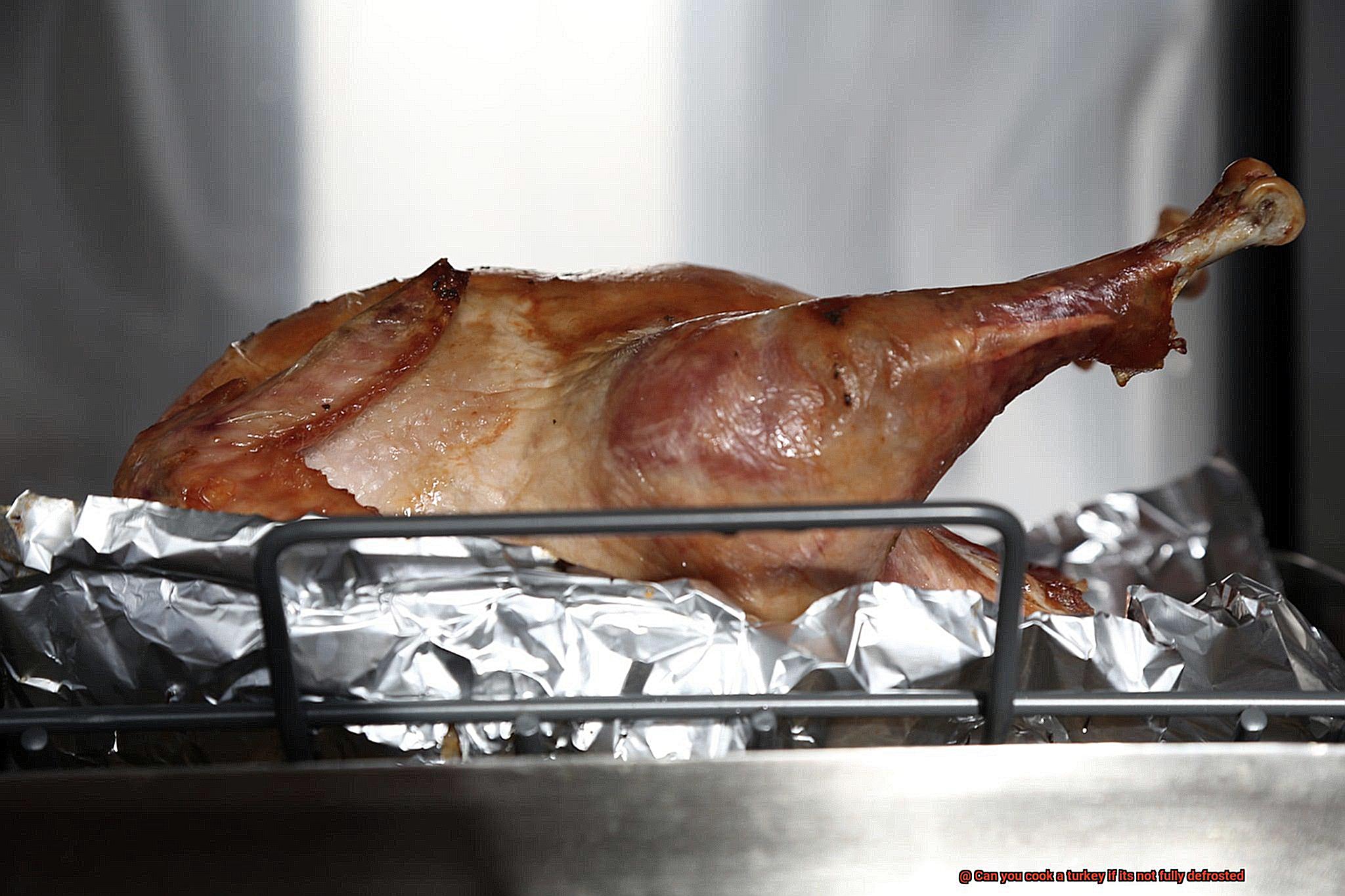
Start with a higher temperature
When cooking a partially frozen turkey, it’s important to start with a higher temperature for the first 30 minutes or so before lowering the heat to finish cooking. This technique helps to quickly defrost the frozen areas while also preventing the outer areas from overcooking. It’s an essential step to ensure that all parts of the turkey cook evenly.
Use a meat thermometer
Cooking a partially frozen turkey requires extra attention to ensure that it reaches a safe internal temperature of 165°F (74°C) throughout. Use a meat thermometer to check the temperature in different parts of the bird, as some areas may take longer to cook than others. This will help you avoid serving undercooked turkey which can pose a risk of foodborne illness.

Baste regularly
Basting your partially frozen turkey every 30 minutes or so can help prevent it from drying out and enhance its flavor. You can spoon juices or melted butter over the turkey for added moisture and tenderness.
Cook in parts
Cooking different parts of the turkey separately, such as the legs and thighs from the breast or removing the wings and cooking them separately as well, can help ensure that each part is cooked thoroughly and evenly. This technique also helps you avoid serving a partially thawed bird and reduces the risk of bacteria growth.
Let it rest
After cooking, let your turkey rest for at least 20-30 minutes before carving. Resting allows the juices to redistribute throughout the meat, making it more tender and flavorful. This final step is crucial in achieving a juicy and succulent turkey.
Is It Safe to Eat a Partially Frozen Turkey?
As the holiday season approaches, you may find yourself in a rush to prepare your Thanksgiving dinner. But, before you consider cooking a partially frozen turkey, let me tell you – it’s not worth the risk. As an expert on this topic, I can assure you that eating a partially frozen turkey is not safe for a few reasons.
Firstly, cooking a partially frozen turkey can result in uneven cooking. Some parts of the turkey will be undercooked, while others may be overcooked. This can create an ideal environment for harmful bacteria like salmonella or campylobacter to thrive, causing severe food poisoning.
Moreover, when a turkey is partially frozen, ice crystals form within the meat. These ice crystals can damage the cell walls of the turkey and make it lose moisture, resulting in dry and tough meat. Cooking a partially frozen turkey can worsen this issue and make the meat even drier and tougher.
To ensure that your Thanksgiving meal is both safe and scrumptious, it’s crucial to fully defrost your turkey before cooking. Here are some ways to do so:
- Thawing in the Refrigerator: The safest method is to thaw the turkey in the refrigerator. Allow approximately 24 hours for every 4-5 pounds of turkey.
- Cold Water Method: If you’re short on time, you can use the cold water method by placing the turkey in a leak-proof bag and submerging it in cold water. Change the water every 30 minutes until fully defrosted. This method takes approximately 30 minutes per pound of turkey.
- Microwave Method: If you’re really running out of time, you can use your microwave to defrost the turkey. However, make sure to follow your microwave’s instructions carefully and cook the turkey immediately after defrosting to avoid bacterial growth.
n9bEz6-SpD4″ >
Conclusion
To cook a partially frozen turkey or not to cook? That is the question. While it may be tempting to pop that bird in the oven and hope for the best, the risks of uneven cooking and food poisoning are just not worth it. The key to a safe and delicious Thanksgiving meal is to fully defrost your turkey before cooking.
But what if you’re faced with a partially frozen turkey on the big day? Fear not, there are ways to safely cook it without jeopardizing anyone’s health. Start by removing all packaging and giblets, then thaw the turkey in cold water. Adjust your cooking time accordingly, using a meat thermometer to check for doneness and basting regularly for added moisture and tenderness. And don’t forget to let your turkey rest before carving.
By following these simple tips, you can ensure that your partially frozen turkey turns out perfectly cooked and safe to eat.
So whether you’re a seasoned pro or a first-time host, take the time to properly defrost your turkey beforehand.

